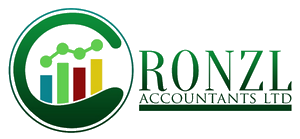Errors in vat returns occur many times, the business owners who are VAT-registered have various obligations which include submitting correct VAT returns.
The main reason for this is to ensure the accuracy of the returns submitted and prevent errors in vat returns, most especially, to ensure the right amounts of input and output VAT are charged and claimed. Many business owners make mistakes that could lead to them paying heavy or uncomfortable penalties in the future or even losing access to tax reliefs.
When there are errors on vat returns or mistakes are made on VAT returns, the consequence is a penalty issued by HMRC.
Penalties can be issued for returns which have a careless or deliberate inaccuracy that could lead to the underpayment of tax, false or inflated statement of loss or repayment, etc.
Penalties on errors in vat returns like this could range from 0 to 100% on the Potential Lost Revenue to HMRC as well as the interest charged on it.
Hence, the need for me to address these errors in this:

Lack of proper record-keeping could be a cause of errors in vat returns.
VAT-registered business owners are required under law to keep records of their output VAT and input VAT transactions.
These include; VAT invoices on which the output VAT is calculated and issued to clients, and receipts, invoices and documents relating to the input VAT they would be claiming on.
Output VAT refers to the amount the business owner charges their customers or clients while input VAT is the tax the business owner claims on an item they purchase or pay for.
The total amount payable or reclaimed is based on the difference between output and input VAT. This is why it is important for these records to be accurate and stored properly.
The only bank statements that are accepted as records for VAT are the ones that have been separated from the total amount. These records must be kept for six years.
If the business owner is under Making Tax Digital, they must keep digital records of each transaction that relates to their returns. Other business owners who are not under MTD can also decide to keep digital records if they like.
When a business owner does not have correct information on VAT invoices.
There is certain information that should be on VAT invoices issued by business owners to their customers. If these pieces of information are inaccurate, they could attract a penalty. Most times, this error is committed by business owners who are newly VAT-registered. Such information required to be on the VAT invoices by law are:
- Invoice number
- Date of supply
- Date when VAT invoice was issued
- Supplier’s name and address and VAT registration number
- Name and address of individual the goods are supplied to
- Quantity of goods
- Rate of VAT applied
- The amount charged as VAT, including the total amount paid by the customer
- Rate of discount, if any given to customers

Errors in vat return due to business owners using some of the items they have already claimed input VAT on for private use.
Another common error in vat returns occurs when a business owner recovers input VAT from HMRC on items bought which are used for personal purposes.
This is because HMRC is paying VAT on the items used privately by the business owner so they (the business owners) are supposed to treat them as self-supplied goods and, therefore, charge themselves VAT on them. This is known as deemed supply.
Deemed supply also occurs when the business owner uses the items they have already claimed VAT on as gifts to friends and family. The only time they do not have to charge themselves VAT on such items is when the gift items meet conditions like:
– The gift costing less than £50
– The gift is made for the furtherance of business, although it is quite difficult to prove that gifts to friends and family are for the purpose of business.
To ensure that this mistake is avoided, business owners have to see to it that they charge output VAT on the items and pay HMRC the amount due.
Errors in vat return when a business decides to deregister their business from VAT.
When a business owner decides and takes action not to be VAT-registered anymore, deregistration occurs. This could result from their turnover going over the threshold. Sometimes, it could also be because the VAT-registered individual does not necessarily need to be registered for VAT. When they make the decision to deregister, they are required to submit their final returns.
Often, business owners make a mistake here they still retain the capital items they already claimed VAT on at the time of deregistration. They do not disclose this on their final returns. As a rule, they are supposed to charge VAT on the replacement cost value.
This is the amount it costs to acquire the same asset at the cost that it is currently) of the item and VAT is to be paid on the last returns submitted.
The only time they will not be required to make this payment is when the VAT output due is less than £1,000.
Errors in vat returns are caused by a business owner giving discounts to its customers.
This error usually happens when the business owner gives these discounts based on the satisfaction of some conditions such as prompt payment.
The error that could be made here occurs when the business owner decides to apply the discounts on the sales items even before the transaction conditions have been met.
Ideally, the business owner is to issue the first invoice with the total amount without the discount applied and when this condition (e.g. prompt payment) is satisfied by the customer, they can go ahead to deduct the discount from the invoice.
This guarantees that the business owner charges the right amount of VAT at all times.

Errors in vat return due to business owners not claiming Bad Debt Relief.
Tax reliefs are meant to provide support to taxpayers when some situations occur. One of these reliefs is Bad Debt Relief.
At times, business owners issue invoices for the sale of items and then declare this invoice to HMRC whilst also paying VAT on the items.
When these invoices do not get paid, the business decides the item is a bad debt when preparing their accounts.
This, however, does not include the VAT paid so it appears that the business has paid VAT and cannot claim relief elsewhere.
The mistake here happens when they are not aware of this relief and go ahead to absorb the loss.
Nevertheless, if a number of conditions are met, the business owners can go on to claim Bad Debt Relief from HMRC on the VAT already paid to them.
The conditions are:
- They must have supplied this particular item to the client.
- They must have accounted for the VAT and also paid VAT on the items.
- Six months must have elapsed since the date of the supply was made or the invoice was raised.
- The claim must be made within four years and six months.
Errors in vat return due to incorrect information.
When a business owner makes errors in vat returns, they might have to pay penalties on the incorrect accounts submitted.
The mistake here happens when the business owner ignores this mistake and assumes they will not be caught by HMRC.
By making this disclosure, they cancel or reduce the penalty they could be paying.
To correct this error, they could make corrections in their next VAT returns if the amount involved is not less than £10,000 or not more than 15% of their turnover.
Any amount over this would have to be corrected by either writing HMRC or filling out form VAT652.
Conclusion on Errors in vat returns.
If after reading this blog, you feel you have made one or two of these errors on vat returns and you would like to resolve them.
Why not book free 30 minutes consultation so that we can advise you on the right part or even support you in resolving the problems? To book this appointment kindly click
